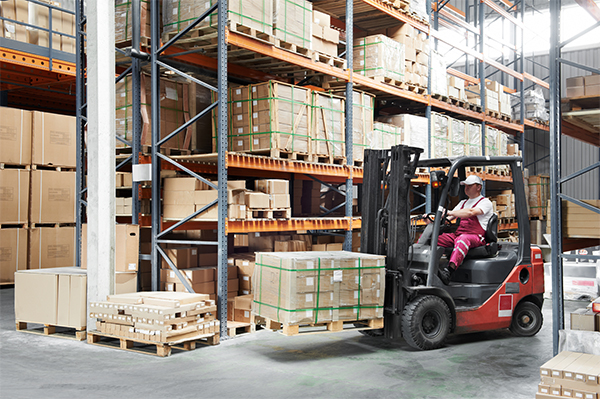TALENTVIS will not solicit fees from job applicants in any form / condition. View more
小心Line詐騙! 請與Talentvis Taiwan官方聯繫查證 詳情
The Changing Skills of the Typical Warehouse Worker | Featured on supplychainasia.org | 5 July 2017 |
oleh Emma • Rab, 05 Jul 2017 09:00AM



The Changing Skills of the Typical Warehouse Worker
The e-commerce boom and technological revolution witnessed across industries globally, and more so in Asia Pacific, has fuelled the need for warehouses to speed up logistics operations and streamline supply chain management processes, leading to transformed warehouse operations in recent times.
While a typical warehouse in the past saw workers running aisle to aisle, manually stocking shelves, sorting out items and doing paperwork to ensure accurate inventory management, today, the use of artificial intelligence (AI) tools, robots, RFID (radio frequency identification technology) scanners and printers, automated delivery drones and self-driving vehicles have revolutionised warehouse workings.
While more people continue to be displaced and robots taking charge, so are new job roles being created for skilled and talented professionals to work alongside robots, streamline logistic operations and expedite product delivery. It is projected that by 2025, the warehouse of the future will see increased levels of efficiency and production.
Foreseeing future through facts & findings
While the growing e-commerce industry has fuelled growth in sales volumes, and heightened customer demands from the marketplace, customers requiring same-day or definite-time deliveries require logistics to accommodate diverse e-commerce requirements.
Findings from the Frost & Sullivan report say that despite challenging economic times, Southeast Asia is poised to become one of the world’s fastest-growing regions for e-commerce revenues, exceeding US$25bn by 2020.
While on one hand, complex geographies, such as Indonesia and the Philippines, with lack of logistics infrastructure, impede the growth of the e-commerce industry in Southeast Asia, the Chinese e-commerce market on the other hand, is providing impetus to growth of online retail in the region.
As the warehouse industry embraces cloud adoption and Internet of Things (IoT), it is now migrating to on-demand, Software-as-a-Service (SaaS) warehouse management systems to save on costs, in terms of warehouse personnel requirement and on-premise equipments.
According to a news report by Cerasis, featuring infographic from Vero Solutions, it is projected that by 2030, warehouses will be part of an initiative to achieve zeronet energy. A net zero building is one that generates as much energy as it uses within a year.
By devising strategies to save on costs and prevent harmful emissions, the warehouses in future will be designed with sustainability goals in mind. Among other eco-conscious initiatives, the industry is looking at recycling of packaging materials during shipping and cutting down on energy consumption through the purchase of high-efficiency equipment.
Towards building a smarter warehouse
Exponential growth of omnichannel shopping and burgeoning demand for faster merchandise deliveries has created the need for “smarter warehouses” to meet the growing demands of today’s connected consumer. The technology enhanced warehouse of the future will bring unprecedented levels of real-time visibility into organisations assets, people and transactions across myriad industries, says findings in Warehouse Vision 2020 Report by Zebra Technologies.
The report further states, 74 per cent of APAC IT decision makers will increase warehouse technology investments in the next five years, and by 2020, only 40 per cent of the respondents will use legacy warehouse management systems, thus foreseeing a drop in the future, from the current 81 per cent.
Transformation in the supply chain ecosystem has further prompted professionals to take a closer look at their warehouse operations and bridge productivity gaps, while slashing down on logistics costs and streamline merchandise shipment delivery.
Over the next five years, warehouse executives will expand the use of cross-docking, which will minimise material handling by eliminating the unnecessary put away. The goal here will be to increase inventory throughput and decrease delivery times without the need for additional storage capacity.
Leveraging on technology: The path forward
A report by DHL, titled Augmented Reality (AR) in Logistics, shows companies using AR systems for optimised picking and warehouse planning. They have seen significant improvements in productivity and warehouse operations. For example, constant picking validation can decrease errors by as much as 40 per cent. Also, use of AR in warehouse planning processes can help visualise any planned rearrangements in full scale.
In the near future, IoT will help facilitate real-time warehouse workforce interaction to improve productivity and performance, while adding a new level of precision and transparency in inventory management and goods handling throughout the supply chain process.
As the logistic industry in Asia Pacific transforms to see the integration of new technologies in SCM processes, thus eliminating the need for low-skilled labour, what do you think will be the path forward for aspirants seeking a career in SCM and logistics? What will be the new job roles created, as more humans work alongside robots in warehouses?
Skills on demand in the Warehouse of the Future
• Data Warehouse Analysts are those who are able to harness technology and make inroads to a full-fledged career in warehouse system management, the logistics industry in Asia Pacific sets the stage right to foresee demand for data warehouse analysts in time. Data warehouse analysts are skilled professionals, who possess the unique ability to analyse, mine and help businesses leverage information stored in the data warehouses. The job role of a data warehouse analyst requires collaboration with developers and business intelligence to translate business requirements into data models. To qualify for this job, candidates should possess solid SQL and Oracle database skills, plus a certificate in data management would be a value-add for most employers.
• Warehouse executives in the future will turn to load optimisation technology solutions to maximise efficiency and agility in packing systems, loading and unloading of goods, staging and shipping. By harnessing real-time analytics, the pack and load solutions will be offered to enhance worker productivity and reduce labour costs through use of automation and IoT.
• Solution Design Experts with knowledge of automation technologies and analytical skills will be in demand to design warehousing and transportation solutions. These experts will help transform regular warehouses from a high-quality facility to a highly-effective logistics hub.
• As research and clinical trial work expands in Singapore, the logistics industry in particular is facing shortage of skilled healthcare logistics professionals to manage cold chain rooms in state-of-the-art warehouses. Technically skilled professionals with knowledge of healthcare industry can seek a career in healthcare logistics.
Bridging the new-age skills gap
Recently, Mr S Iswaran, Minister for Trade and Industry (Industry) unveiled the Logistics Industry Transformation Map (ITM) to reinforce Singapore’s position as a global leading logistics hub through operations excellence, innovation and a strong Singaporean core. Transformation of the logistics industry is expected to achieve a value-add of S$8.3bn and introduce 2,000 new PMET jobs by 2020.
To bolster the logistics innovation ecosystem in Singapore, the Government will work with research institutions and universities to develop world-class capabilities in the logistics and supply chain management domains.
The government will also continue to promote Singapore as a location of choice for leading manufacturers and brand owners to base their supply chain management activities and decision making. The Logistics Professional Conversion Programmes (PCP) by Workforce Singapore under the ‘Adapt and Grow’ initiative by the Government will help mid-career professionals from other sectors to smoothly transition into the industry.
A Logistics Skills Framework led by SkillsFuture Singapore will provide comprehensive information on career pathways, in consultation with unions, government agencies and industry leaders.
About the Author
Ben Chew is a serial entrepreneur with 15 years of experience in the HR/Recruitment space. He currently has several HR tech projects, including a leading Recruitment & Executive Search Group – Talentvis Singapore Pte Ltd. He is also the Managing Director of Strategia Ventures. Ben is also involved in many community initiatives in the local startup ecosystem, including start-up Jobs Asia.
Appeared on supplychain.asia
Recommended for you

Decide the Best Outsourcing Payroll Service for Your Business
Choosing the suitable outsourcing payroll service for your business can be a game-changer for your business operation. It’s effective, error-free, and allows you to focus more on the main business.
Kam, 04 Sep 2025 10:09AM

Stay Motivated While being Unemployed: 5 Inspiring Tips
Job hunting all day, every day, when you are unemployed, is prone to stress and burnout. You might not even land your next job for a long time. Here are several things to do to stay motivated when you are unemployed.
Rab, 16 Jul 2025 07:07AM

Work Policies that Empower Working Mothers and Caregivers
Mothers and caregivers often have to opt out of the workforce because of their many responsibilities. To celebrate International Women’s Day 2025, here are some policies to support working mothers and caregivers in their careers.
Rab, 05 Mar 2025 10:03AM
BERLANGGANAN NAWALA KAMI
Dapatkan info pekerjaan, berita, dan acara terbaru kami. Tidak ada spam, kami janji.